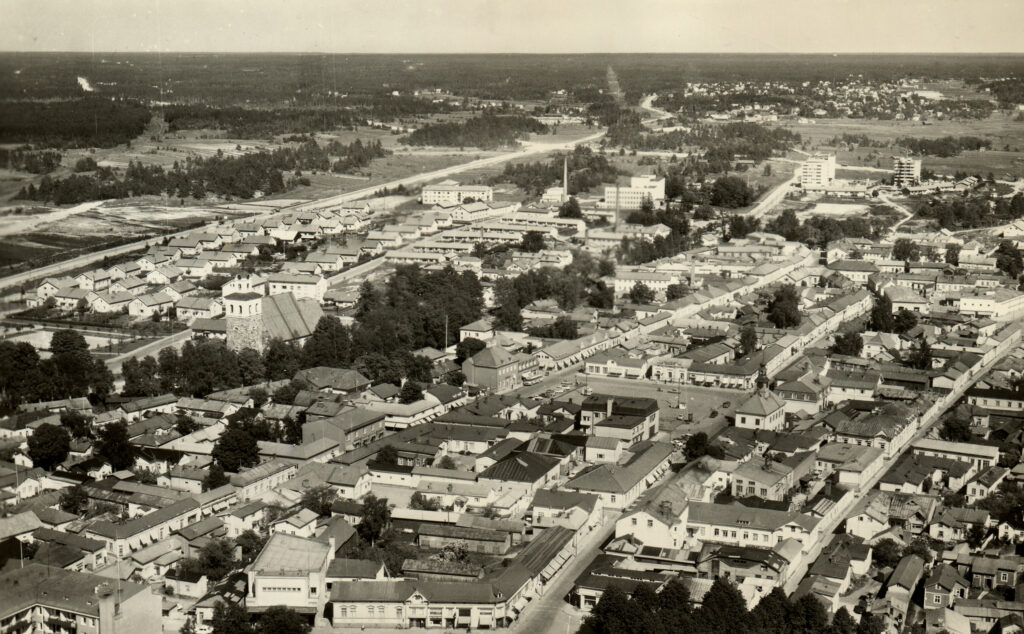Salwi

History
In 1756, the Salwi plot belonged to Harolini. In 1800, the plot was owned by Regina Lempelin, a dowager patron. She had a small field and meadow, but was considered poor. Maija Nyman, a blacksmith, also lived in the house.
Modification drafts
The oldest alteration drawing of the buildings on the plot dates from 1886. The buildings are located at right angles, with the residential building facing Itäkatu and the riverbank, and the outbuilding on the riverbank, on the eastern side of the plot. There is a separate latrine building on the southern boundary and an open enclosure between the barn and the latrine. On the east side of the property is a dwelling with two large rooms, a kitchen and a smaller pantry. The building is a semi-detached house. The alteration was to demolish the wall between the entrance hall and the hall chamber to make room for the kitchen and its baking oven. There is a small porch in front of the entrance. The wing on the river bank is also a semi-detached wing. It has three rooms, the width of the building’s frame, and a small antechamber and hallway. The rear chamber has its own entrance. There is a porch in front of both entrances.
One room in the outbuilding is also a heated chamber. It is not connected to the dwelling, but is a narrower, separate log frame, accessed through a pass-through shed. The same shed also gave access to the dormitory. The building continues along the eastern boundary of the site with a barn, shed and barn. The façade of the dwelling is neo-renaissance in style, with horizontal brickwork. The four-pane windows are panelled and terminate in a foliate lily motif at the top.
An addition was made to the inner corner of the dwelling in 1903 to house the kitchen. The porches were also replaced at the same time. In due course, the hallway wall, which had been demolished to make way for the kitchen stove, was rebuilt and the kitchen stove was replaced by a conventional heating stove. In 1928, fireplace modifications were made: three new stoves.
The 1972 drawing shows that the building at the corner of Itäkatu and the riverbank had been divided into four to five small apartments, but now they wanted to combine the spaces to form one large apartment with a sauna. The building was now also equipped with amenities, including two toilets. In order to switch to electric heating, the fireplaces were dismantled, with the exception of one furnace. A fireplace was planned for one of the rooms. The plans were drawn up by architect Eero O. Kari.
Current situation
Residential building
Residential building with long corners, saddle roof. The exterior corresponds to an alteration drawing from 1886 (probably by John F. Lindegren)
Exterior building
Clapboarded outbuilding
Gate
Made to the old design.